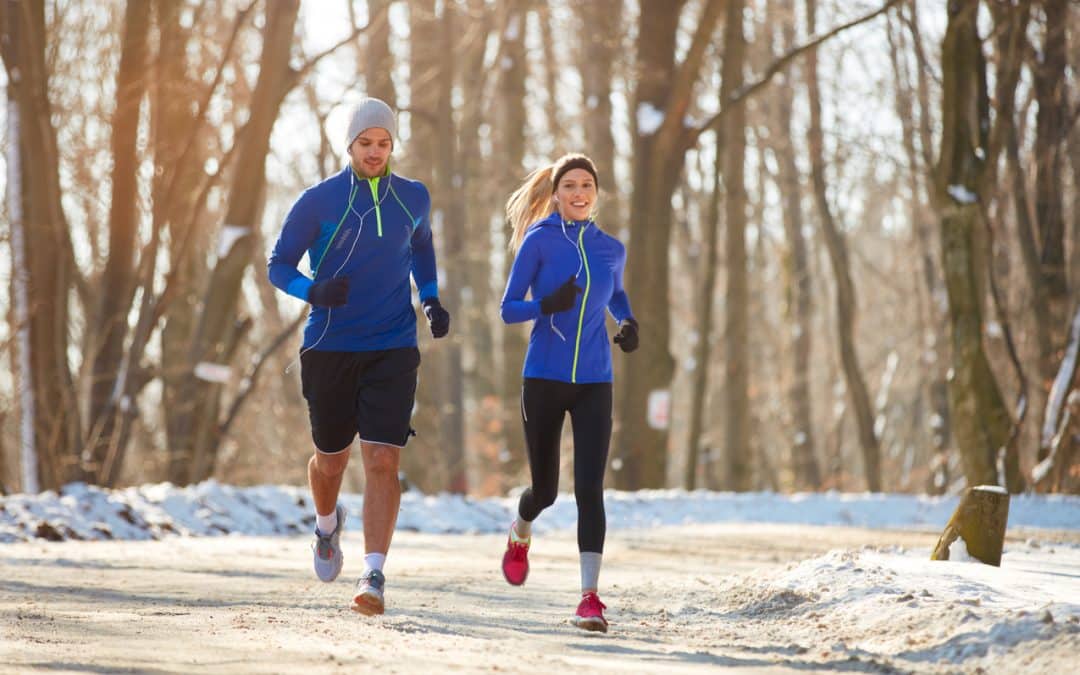The Benefits of Exercising Outdoors
Jennifer Gay, an associate professor in the University of Georgia’s College of Public Health department explains that physical activity can prevent or help manage a number of chronic conditions, as well as strengthen bones, improve cognitive function and help people lose weight. Exercising, especially outdoors, also boosts immune function and mental health, both of which are especially important during this pandemic. Research conducted over the last months has even shown that exercise is one of the most valuable tools for maintaining both physical and mental wellbeing as the COVID-19 pandemic continues.
No matter where you live, if you plan on exercising outdoor this winter, there are some precautions and safety measures you should take.
Safety Tips for Exercising Outdoors
- Communicate: Before heading outdoors for your workout, let a friend or family member know where you are going and how long you will be gone. While most people use their phone for music, it is still important to make sure you always have your phone easily accessible and charged in case of an emergency.
- Be Aware: Running, biking and walking all provide a relaxing mental break, however, it is important to pay attention to your surroundings. Always look both ways before crossing a street or going though and intersection and go against traffic if there is not a sidewalk. If you are out hiking, it is especially important to be aware of your surrounding and watch for wildlife.
- Avoid Loud Music: Loud music can be motivating, but it also makes it difficult to be fully aware. Keep your music down low, or better yet, use your phone’s speaker instead of headphones while exercising outdoors.
- Wear a Reflective Belt: There are fewer hours of daylighting during the winter months, which depending on your schedule, may have you exercising at dusk, dawn or even at night. Regardless of where you may be exercising, it is important to wear a reflective belt and avoid wearing all black clothing.
- Consider a Self-Defense Class: Many people prefer to run, walk, bike and even hike alone, which is why it is a good idea to have some self-defense training. Although, the risk of an attack is extremely low, having the knowledge to protect yourself will help you feel more relaxed and confident while outdoors.
Safety Tips for Exercising in Cold Weather
- Check the Forecast: If you are planning on exercising outdoors in colder weather, always check the forecast before heading outside. Temperature, wind and moisture, along with the length of time that you’ll be outside, are key factors in planning a safe cold-weather workout. Consider putting off your workout if it’s raining or snowing unless you have waterproof gear.
- Know the of Signs Frostbite: Frostbite is an injury to the body that is caused by freezing and is most common on exposed skin, such as your cheeks, nose and ears. It can also occur on hands and feet. Early warning signs include numbness, loss of feeling or a stinging sensation. Immediately get out of the cold if you experience any of these symptoms and let the affected areas warm up slowly, do not rub them or use hot water!
- Know the Signs of Hyperthermia: Hypothermia is an abnormally low body temperature that can occur when exposed to cold, damp environments. Hypothermia signs and symptoms include intense shivering, slurred speech, loss of coordination and fatigue. Seek emergency help right away if you suspect hypothermia.
- Dress in Layers: Exercising in cold weather requires you to dress in layers so that you can remove layers as soon as you start to sweat and then put them back on as needed. First, put on a thin layer of synthetic material, such as polypropylene, which draws sweat away from your body. Avoid cotton, which stays wet next to your skin. Next, add a layer of fleece or wool for insulation. Top this with a waterproof, breathable outer layer.
- Warm Accessories: When it’s cold, blood flow is concentrated in your body’s core, leaving your head, hands and feet vulnerable to frostbite. When exercising outdoors in the winter, make sure to wear a thin pair of glove liners made of a wicking material under a pair of heavier gloves or mittens lined with wool or fleece, as well as thermal socks and a hat.
- Stay Hydrated: You might not always feel the need to drink water in the winter, but hydration is just as important in the cold weather as it is in the heat. Drink water or a sports drink before, during and after your workout, even if you do not feel thirsty.
For more information visit Pinnacle Health or Mayo Clinic!








